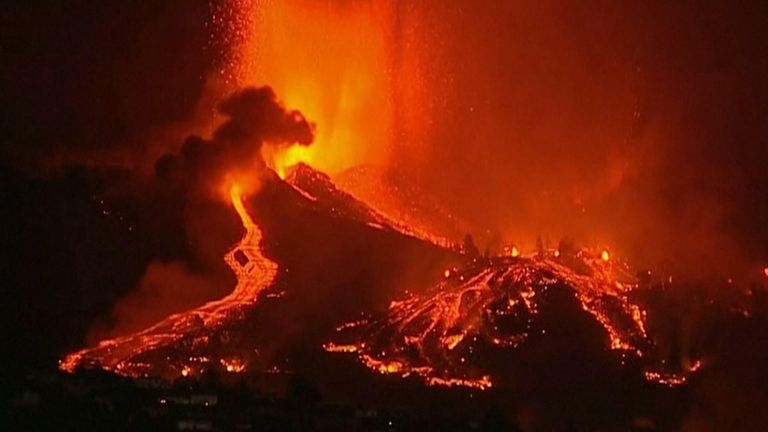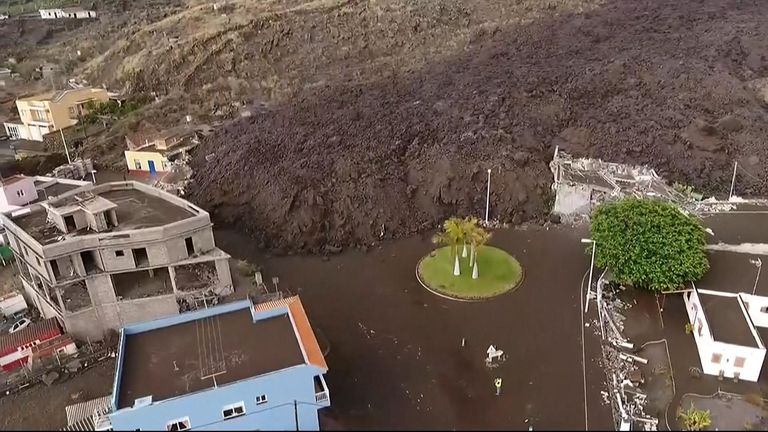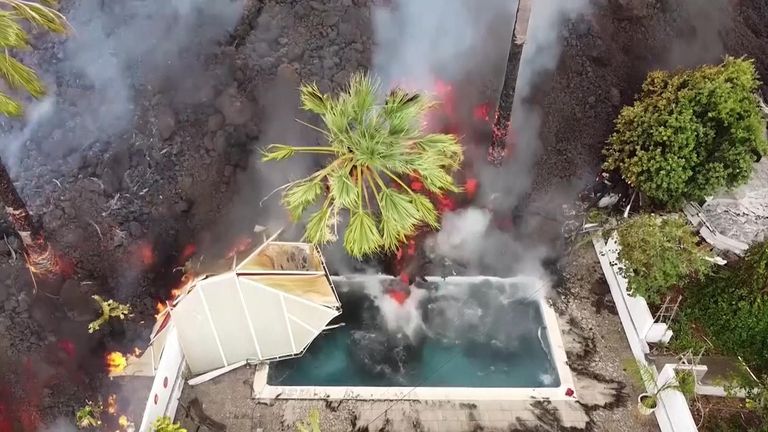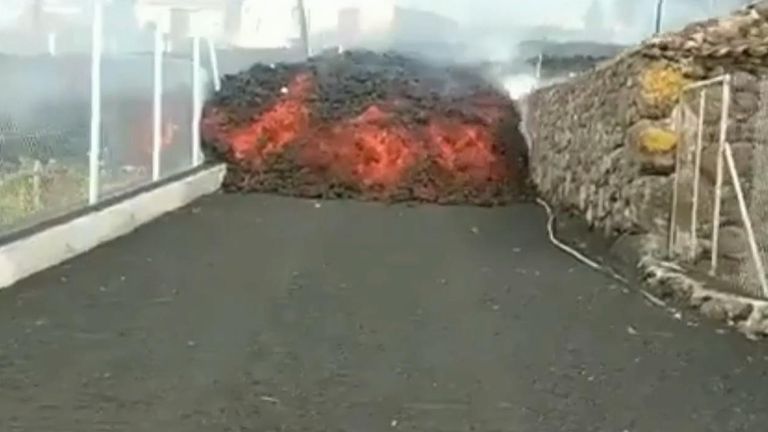Swathes of La Palma are swimming in volcanic ash. It’s everywhere, on the roads, covering cars and buildings and in your clothes, and probably lungs.
The roar of the volcano can be heard for miles. It is thunderous and menacing. The lava is spewing from the crater, burning everything in its path, utterly consuming anything in its way.
A funnel of thick black smoke is twirling into the sky. The ash weighs heavily in the air. It is meant to be 26C and sunny but the volcano has other plans.
It has turned into something of a spectacle. People have travelled from miles away to come and see it despite advice to steer clear.
According to the latest estimates the area affected by lava covers 140.44 hectares, with a front of 600m.
Locals watch on in horror but are also impressed. They are almost in a daze, many do not remember the 1971 eruption and are shocked at the devastation.
Sunday’s eruption saw the mass evacuation of some 6,000 locals.
No lives have been lost, but many homes and belongings have been consumed by unstoppable rivers of lava.
Authorities have now warned of new dangers including toxic gases, volcanic ash and acid rain.
Spain’s meteorological agency predicted acid rain would begin to fall on Friday.
Meanwhile, the Copernicus Atmosphere Monitoring Service (CAMS) is keeping an eye on the spread of sulphur dioxide, which affects the lungs, across the peninsula.
Spain’s King Felipe VI and Queen Letizia will visit the island on Thursday.
The aftermath of the eruption could last for up to 84 days, according to Canary Islands Volcanology Institute.
Rivers of molten lava are still on the move and emergency workers are trying to do their best to keep ahead of it and evacuate more people before it is too late.
The emergency services have an epic task ahead of protecting people from an unpredictable disaster.
















